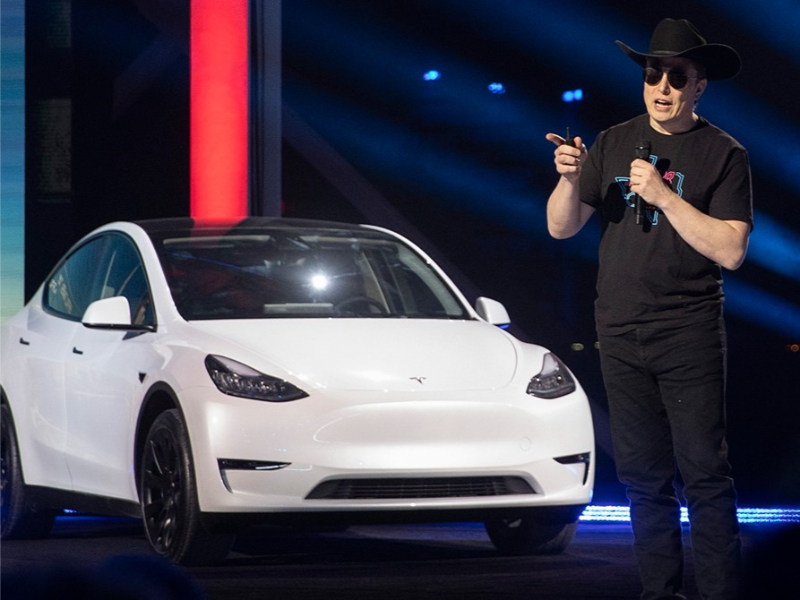- Musk didn’t address a steering wheel’s presence in Tesla’s robotaxi during an earnings call, prompting speculation on its development status.
- Tesla faces regulatory challenges, including the need for potential FMVSS exemptions for deploying vehicles without traditional controls, similar to other autonomous vehicle companies.
OUR TAKE
The progress and details of Tesla’s self-driving taxi project, as a key part of the company’s future strategy, have been the focus of public and media attention. However, during the recent earnings call, Musk remained silent on key issues such as whether Tesla’s self-driving taxis will be equipped with steering wheels, triggering widespread speculation and discussion about the future direction of the project.
–Elodie Qian, BTW reporter
What happened
During an earnings call, Elon Musk, CEO of Tesla, refrained from addressing the pivotal question of whether the Tesla robotaxi will include a steering wheel or not. This omission has left an important query lingering over Tesla’s robotaxi plans, which have already been postponed to allow for further prototype development.
Tesla’s robotaxi initiative is shrouded in uncertainty regarding the deployment timeline, which hinges on technological progress and regulatory approvals, as acknowledged by the company in a letter to its shareholders. “Though timing of Robotaxi deployment depends on technological advancement and regulatory approval, we are working vigorously on this opportunity given the outsized potential value,” stated the company.
Musk was specifically queried about the type of regulatory approval Tesla would pursue, particularly if the company would seek an exemption from Federal Motor Vehicle Safety Standards (FMVSS) to deploy a vehicle devoid of traditional controls. He chose not to respond directly, instead contrasting Tesla’s “generalized solution” with Waymo’s “localized” approach, which he characterized as “quite fragile.”
Federal Motor Vehicle Safety Standards mandate the inclusion of basic human controls such as steering wheels, pedals, and sideview mirrors in vehicles. Manufacturers can apply for exemptions if their proposed vehicles do not meet all existing FMVSS requirements. However, the government imposes a cap of 2,500 exemptions per company per year.
This cap theoretically prevents any autonomous vehicle company, including Tesla, from deploying purpose-built autonomous vehicles on a large scale. Advocates for AV technology have attempted to pass legislation to lift this cap, but the bill is currently stalled in Congress due to concerns over liability and the readiness of the technology.
Also read: Tesla delays robotaxi launch amid design changes
Also read: Who is building robotaxis?
Why it’s important
Only Nuro has been granted an FMVSS exemption at present, allowing it to operate a limited number of driverless delivery robots in Texas and California. Cruise, owned by GM, sought an exemption for its steering wheel- and pedal-less Origin shuttle but was not approved, resulting in the project’s indefinite suspension. Amazon’s Zoox claimed its autonomous shuttle was “self-certified,” which led to an investigation by the National Highway Traffic Safety Administration.
Other companies, such as Waymo, have opted to retain traditional controls in their driverless vehicles, despite operating on public roads without safety drivers. Waymo has indicated plans to eventually introduce a steering wheel-free vehicle but has not specified a timeline or confirmed whether it will seek an FMVSS exemption.
Tesla faces similar regulatory hurdles, depending on its decision regarding traditional controls. There have been hints, such as design drawings suggesting a steering wheel-free vehicle.
Critics have dismissed the Tesla robotaxi as vaporware, pointing out that Waymo is conducting nearly 50,000 passenger trips weekly, while Musk continues to make vague promises about a vehicle that has yet to be seen and may never exist.
Musk insists that Tesla is fundamentally an AI company, not a traditional car company, yet he has not been forthcoming about the real challenges the company is likely to face in realizing this vision.
The public will have to wait until October, or possibly later, for a definitive answer regarding Tesla’s robotaxi plans, contingent on any further delays.Why it’s important

